Linn AV 5125 Handleiding
Bekijk gratis de handleiding van Linn AV 5125 (22 pagina’s), behorend tot de categorie Receiver. Deze gids werd als nuttig beoordeeld door 38 mensen en kreeg gemiddeld 4.4 sterren uit 19.5 reviews. Heb je een vraag over Linn AV 5125 of wil je andere gebruikers van dit product iets vragen? Stel een vraag
Pagina 1/22

i
Important safety information
Explanation of symbols used in this manual and on the product:
This symbol is intended to alert the user to the presence of uninsulated
dangerous voltages within the enclosure of sufficient magnitude to
cause electric shock.
This symbol is intended to alert the user to the presence of important
maintenance and servicing information in the instruction and service
manuals.
CAUTION
TO REDUCE THE RISK OF ELECTRIC SHOCK DO NOT REMOVE THE COVER.
NO USER SERVICEABLE PARTS INSIDE.
REFER SERVICING TO QUALIFIED SERVICE PERSONNEL.
WARNING: SHOCK HAZARD. DO NOT OPEN.
AVIS: RISQUE DE CHOC ELECTRIQUE. NE PAS OUVRIR.
CAUTION: REPLACE FUSE WITH SAME TYPE AND RATING.
ATTENTION: UTILISER UN FUSIBLE DE RECHANGE DE MÊME TYPE.
DISCONNECT SUPPLY CORD BEFORE CHANGING FUSE.
ATTENTION: DEBRANCHER AVANT DE REMPLACER LE FUSIBLE.
WARNING
TO REDUCE THE RISK OF FIRE OR ELECTRIC SHOCK DO NOT EXPOSE THIS
APPLIANCE TO RAIN OR MOISTURE.
MAINS PLUGS
This appliance is supplied with a non-rewireable mains plug for the intended
country.
Replacement mains leads can be obtained from your Linn retailer.
Should you need to change the plug please dispose of it carefully.
A plug with bared conductors is dangerous if engaged in a live socket.
The Brown wire must be connected to the Live (Line) supply pin.
The Blue wire must be connected to the Neutral supply pin.
The Green/Yellow wire must be connected to the Earth (Ground) supply pin.
Please contact your retailer or a competent electrician if you are in any doubt.
GENERAL SAFETY INSTRUCTIONS
1. Read instructions. Read the safety and operating instructions before operating the
appliance.
2. Retain instructions. Retain the safety and operating instructions for future reference.
3. Heed warnings. Observe all warnings on the appliance and in the operating instructions.
4. Follow instructions. Follow all operating and use instructions.
5. Water and moisture. Do not use the appliance near water, for example near a bathtub,
washbowl, kitchen sink, laundry tub, in a wet basement, or near a swimming pool and
the like.
6. Carts and stands. Use only with a cart or stand that is recommended by the manufacturer.
6a. An appliance and cart combination should be used with care. Quick stops, excessive
force, and uneven surfaces may cause the appliance and cart combination to overturn.
7. Wall or ceiling mounting. Mount to a wall or ceiling only as recommended by the
manufacturer.
8. Ventilation. Site the appliance so that its location or position does not interfere with its
proper ventilation. For example, the appliance should not be situated on a bed, sofa,
rug, or similar surface that may block the ventilation openings, or placed in a built-in
installation such as a bookcase or cabinet that may impede the flow of air through the
ventilation openings.
9. Heat. Site the appliance away from heat sources such as radiators, heaters, stoves, or
other appliances (including amplifiers) that produce heat.
10. Power sources. Connect the appliance to a power supply only of the type described in
the operating instructions or marked on the appliance.
11. Grounding or polarisation. Do not defeat the safety purpose of the polarised or
grounding type plug. A polarised plug has two blades with one wider than the other. A
grounding type plug has two blades and a third grounding prong. The wide blade or
the third prong are provided for your safety. When the provided plug does not fit into
your outlet, consult an electrician for replacement of the obsolete outlet.
12. Power cord protection. Route power cords so that they are not likely to be walked on or
pinched by items placed upon or against them, paying particular attention to cords at
plugs, power sockets, and at the point where they exit from the appliance.
13. Protective attachment plug. As a safety feature the product is equipped with an
attachment plug containing overload protection. See the instruction manual about
resetting or replacing the plug. Should the plug need replacing ensure that a
replacement is used which has the same overload protection as the original.
14. Cleaning. The product should be cleaned only as recommended by the manufacturer.
15. Power lines. An outdoor antenna should be located away from power lines.
16. Outdoor antenna grounding. If an outdoor antenna is connected to the tuner/receiver
ensure that the antenna system is grounded to provide some protection against voltage
surges and static build up.
In the USA see article 810 of the National Electrical Code ANSI/NFPA 70 concerning
installation requirements.
17. Unplug this apparatus during lightning storms or when unused for long periods of time.
18. Objects and liquid entry. Take care not to let objects or liquids fall into the product.
19. Damage requiring service. The product should be serviced by qualified personnel if:
a) The power cord or plug has been damaged.
b) Objects or liquid have fallen into the product.
c) The product has been exposed to rain.
d) The product does not appear to operate normally or exhibits a marked change in
operation.
e) The product has been dropped or the enclosure damaged.
20. Servicing. Don’t attempt to service the product beyond that described in the operating
instructions. All other servicing should be referred to qualified service personnel.

ii
UK USERS PLEASE READ THIS IMPORTANT SAFETY INFORMATION
Fuse replacement
This appliance is fitted with a non-rewireable 13 Amp mains plug. The plug
contains a 5 Amp fuse. If the fuse has blown it can be replaced as follows:
a) Pull out the red fuse cover/carrier.
b) Remove and dispose of the blown fuse.
c) Fit a new 5 Amp BS1362 approved fuse into the carrier and push the carrier
back into the plug.
Always ensure the fuse cover is fitted. If the fuse cover is missing do not use the
plug. Contact your Linn retailer to obtain a replacement fuse cover.
Fuses are for fire protection and do not protect against electric shock.
Mains plug replacement
Should your mains plug need replacing and you are competent to do this
proceed as follows. If you are in doubt contact your Linn retailer or a competent
electrician.
a) Disconnect the plug from the mains supply.
b) Cut off the plug and dispose of it safely. A plug with bared conductors is
dangerous if engaged in a live socket.
c) Only fit a 13 Amp BS1363A approved plug with a 5 Amp fuse.
d) The cable wire colours or a letter will be marked at the connection points of
most quality plugs.
Attach the wires securely to their respective points. The Brown wire must go to
the Live pin, the Blue wire must go to the Neutral pin, and the Green/Yellow wire
must go to the Earth pin.
e) Before replacing the plug top ensure that the cable restraint is holding the
outer sheath of the cable firmly and that the wires are correctly connected.
WARNING
THIS APPLIANCE MUST BE EARTHED.
Replacing the fuse
Should the mains fuse blow replace it only with an equivalent part. The fuse
holder is located just below the mains inlet socket. To replace the fuse
disconnect the product from the mains supply. Using a flat blade screwdriver
remove and replace the fuse. If the fuse blows a second time there is a fault in
the product. Contact your local retailer.
Fuse ratings. See specifications section.
Mains voltage operating range. See specifications section.
CE Declaration of Conformity
Linn Products Ltd declare that this product is in conformance with the Low
Voltage Directive 73/23/EEC and Electromagnetic Compatibility 89/336/EEC as
amended by 92/31/EEC and 93/68/EEC.
The conformity of the designated product with the provisions of Directive
number 73/23/EEC (LVD) is proved by full compliance with the following
standards:
Standard number Date of issue Test type
EN60065 1993 General requirements
Marking
Ionizing
Heating under normal conditions
Shock hazards under normal
operating instructions
Insulation requirements
Fault conditions
Mechanical strength
Parts connected to the mains supply
Components
Terminal devices
External flexible cords
Electrical connections and
mechanical fixings
The conformity of the designated product with the provisions of Directive
number 89/336/EEC (EMC) is proved by full compliance with the following
standards:
Standard number Date of issue Test type
EN55013 1994 Conducted emissions
EN55013 1994 Absorbed emissions
EN60555-2 1987 Harmonics
EN60555-3 1987 Voltage fluctuations
EN55020 1994 Immunity
FCC notice
NOTE: This equipment has been tested and found to comply with the limits for a
Class B digital device, pursuant to Part 15 of the FCC Rules. These limits are
designed to provide reasonable protection against harmful interference in a
residential installation. This equipment generates, uses and can radiate radio
frequency energy and, if not installed and used in accordance with the
instructions, may cause harmful interference to radio communications. However,
there is no guarantee that interference will not occur in a particular installation.
If this equipment does cause harmful interference to radio or television
reception, which can be determined by turning the equipment off and on, the
user is encouraged to try to correct the interference by one or more of the
following measures:
— Reorient or relocate the receiving antenna.
— Increase the separation between the equipment and receiver.
— Connect the equipment into an outlet on a circuit different from that to which
the receiver is connected.
— Consult the dealer or an experienced radio/TV technician for help.

iii
Instructions de sécurité
Explication des symboles utilisés dans ce manuel et sur le produit :
Ce symbole avertit l’utilisateur de la présence d’une tension dangereuse
localisée à l’intérieur du carter de l’appareil et pouvant être
suffisamment élevée pour présenter un risque de choc électrique.
Ce symbole informe l’utilisateur que ce manuel contient des instructions
importantes concernant l’entretien et le dépannage.
ATTENTION
AFIN DE LIMITER LE RISQUE DE CHOC ELECTRIQUE, NE PAS RETIRER LE
CAPOT.
L’NTERIEUR NE COMPORTE QUE DES COMPOSANTS REPARABLES PAR UN
SPECIALISTE.
EN CAS DE PROBLEME CONTACTER UN REPARATEUR AGREE.
AVIS : RISQUE DE CHOC ELECTRIQUE. NE PAS OUVRIR.
ATTENTION : UTILISER UN FUSIBLE DE RECHANGE DE MEME TYPE.
ATTENTION : DEBRANCHER AVANT DE REMPLACER LE FUSIBLE.
AVERTISSEMENT
AFIN DE LIMITER LE RISQUE D’INCENDIE OU DE CHOC ELECTRIQUE, NE PAS
EXPOSER CET APPAREIL A LA PLUIE OU A L’HUMIDITE.
FICHES SECTEURS
Cet appareil est livré avec une fiche secteur non démontable adaptée aux
normes électriques du pays d’utilisation.
Procurez-vous des cordons de secteur de remplacement auprès de votre
revendeur Linn.
Si vous devez remplacer la fiche, manipulez-la avec soin.
Une fiche présentant des conducteurs nus est dangereuse si elle est branchée
dans une prise sous tension.
Le fil marron doit être connecté à la broche de ligne sous tension.
Le fil bleu doit être connecté à la broche du neutre.
Le fil vert/jaune doit être connecté à la broche de la masse.
En cas de doute, veuillez contacter votre revendeur ou un électricien qualifié.
INSTRUCTIONS GENERALES DE SECURITE
1. Veuillez lire toutes les instructions de sécurité et de fonctionnement avant d’utiliser l’appareil.
2. Veuillez conserver les instructions de sécurité et de fonctionnement pour pouvoir vous y
reporter ultérieurement.
3. Tenez compte des avertissements. Respectez tous le avertissements figurant sur l’appareil et
sur la notice d’utilisation.
4. Suivez les instructions. Suivez toutes les instructions relatives à l’utilisation et au
fonctionnement.
5. Eau et humidité. N’utilisez pas cet équipement à proximité d’une baignoire, d’une bassine,
d’un évier, d’une cuve à lessive, dans un sous-sol humide, près d’une piscine ou de toute autre
source d’humidité.
6. Chariots et socles. Placez ce système uniquement sur un chariot ou sur un socle recommandé
par le fabricant.
6a. L’ensemble appareil-chariot doit être déplacé avec précaution. Il peut basculer en cas d’arrêt
brusque, de poussée excessive ou de parcours accidenté.
7. Montage au mur ou au plafond. Suivez scrupuleusement les recommandations du fabricant si
vous décidez de fixer le système au mur ou au plafond.
8. Ventilation. Positionnez l’appareil de façon à ne pas obstruer sa ventilation. Ne le posez pas
sur un lit, un canapé, un tapis ou autre surface similaire, car les ouvertures prévues pour la
ventilation pourraient être bloquées. Ne le placez pas dans un meuble encastré (bibliothèque
ou placard, par exemple) car cela risquerait également d’empêcher la circulation de l’air à
travers les évents.
9. Chaleur. Eloignez l’appareil de toute source de chaleur : radiateurs, chauffe-eau, poêles, ou
tout autre appareil électrique (y compris un amplificateur) produisant de la chaleur.
10. Alimentation électrique. Connectez l’appareil à une source de courant adéquate, en suivant
les instructions de fonctionnement ou d’utilisation inscrites sur l’appareil.
11. Raccord à la masse ou polarisation. Ne touchez pas au dispositif de sécurité de raccordement
à la masse et de polarité. Une fiche polarisée a une broche plus épaisse que l’autre. Une fiche
de terre a trois broches : une pour le neutre, une pour la phase, une pour la terre. La broche
de mise à la masse est prévue pour votre sécurité. Si la fiche fournie ne correspond pas à la
prise de secteur, consultez un électricien et faites remplacer votre prise murale.
12. Protection du cordon d’alimentation. Placez les cordons d’alimentation électriques afin qu’on
ne puisse pas marcher dessus ni les écraser. Prenez grand soin des cordons, en particulier au
niveau des fiches, des prises murales et à la sortie de l’appareil.
13. Fiche de raccordement de protection. Dans un souci de sécurité, ce produit a été équipé
d’une fiche de raccordement dotée d’une protection contre les surtensions. Reportez-vous
aux instructions relatives au remplacement ou au réenclenchement de la fiche. Si la fiche doit
être remplacée, veillez à ce que la nouvelle fiche soit également munie d’une protection
contre les surtensions.
14. Nettoyage. Nettoyez l’appareil en suivant les recommandations du fabricant.
15. Lignes secteur. Veillez à ce que l’antenne extérieure soit éloignée des lignes secteur.
16. Raccordement à la masse de l’antenne extérieure. Si une antenne extérieure est connectée au
tuner/récepteur, veillez à ce que le système de l’antenne soit raccordé à la masse de façon à
fournir une protection contre les surtensions et l’accumulation d’électricité statique.
Pour les Etats-Unis, consultez l’article 810 du National Electrical Code ANSI/NFPA 70 relatif à
la conformité des installations électriques.
17. Périodes de non-utilisation. Débranchez le cordon d’alimentation de la prise murale si vous
avez l’intention de ne pas utiliser l’appareil pendant une longue période.
18. Pénétration d’objets et de liquides. Veillez à ce qu’aucun objet ne tombe à l’intérieur et
qu’aucun liquide ne coule dans l’appareil.
19. Dégâts exigeant une réparation. Le système doit être confié à un réparateur agréé si :
a) le cordon d’alimentation électrique ou la fiche ont été endommagés,
b) des objets sont tombés à l’intérieur ou un liquide a été répandu dans l’appareil,
c) l’équipement a été exposé à la pluie,
d) il ne semble pas fonctionner normalement ou présente un changement notoire de
performance ou
e) le système est tombé ou son boîtier a été endommagé.
20. Réparations. N’essayez en aucun cas de réparer ce système vous-mêmes. Conformez-vous
aux instructions de fonctionnement. Toute intervention doit être confiée à un réparateur
agréé.
Product specificaties
| Merk: | Linn |
| Categorie: | Receiver |
| Model: | AV 5125 |
Heb je hulp nodig?
Als je hulp nodig hebt met Linn AV 5125 stel dan hieronder een vraag en andere gebruikers zullen je antwoorden
Handleiding Receiver Linn

25 Februari 2024

25 Februari 2024

25 Februari 2024

25 Februari 2024

25 Februari 2024

25 Februari 2024

25 Februari 2024

25 Februari 2024

25 Februari 2024

25 Februari 2024
Handleiding Receiver
- Hager
- Telestar
- C2G
- Technisat
- Audix
- Atoll
- American Audio
- Hotone
- Rockville
- Aiwa
- JTS
- JB Systems
- Steren
- Ram Audio
- Comprehensive
Nieuwste handleidingen voor Receiver
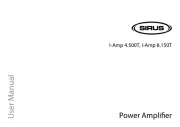
10 September 2025
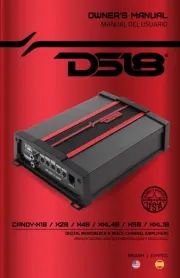
8 September 2025
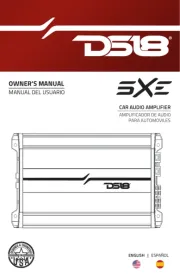
8 September 2025
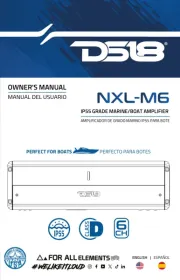
8 September 2025
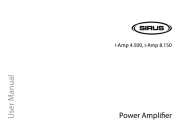
8 September 2025
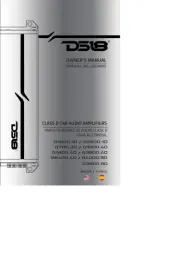
8 September 2025
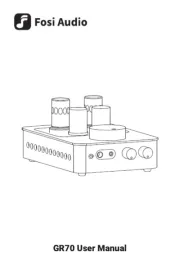
2 September 2025
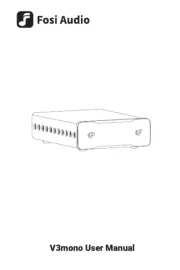
2 September 2025
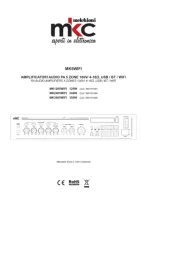
1 September 2025
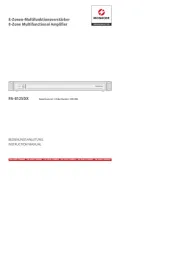
1 September 2025